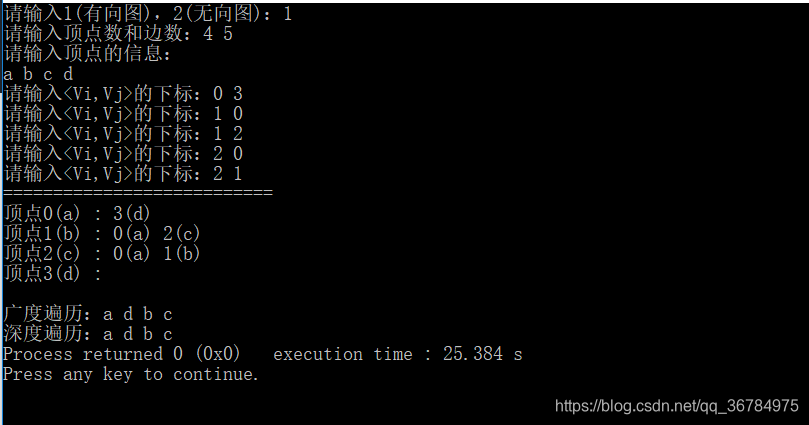鄰接表表示圖(有向、無向圖)及廣度、深度遍歷)
阿新 • • 發佈:2019-01-01
鄰接表表示圖
#include <iostream>
#include <malloc.h>
#include <queue>
using namespace std;
#define VertexType char
#define MaxVertexNum 20 //最大頂點數
queue<int>Q; //輔助佇列
enum GraphType{DG, UDG}; //DG表示有向圖,UDG表示無向圖
typedef struct ArcNode{ //邊結點 有向圖測試

無向圖測試

